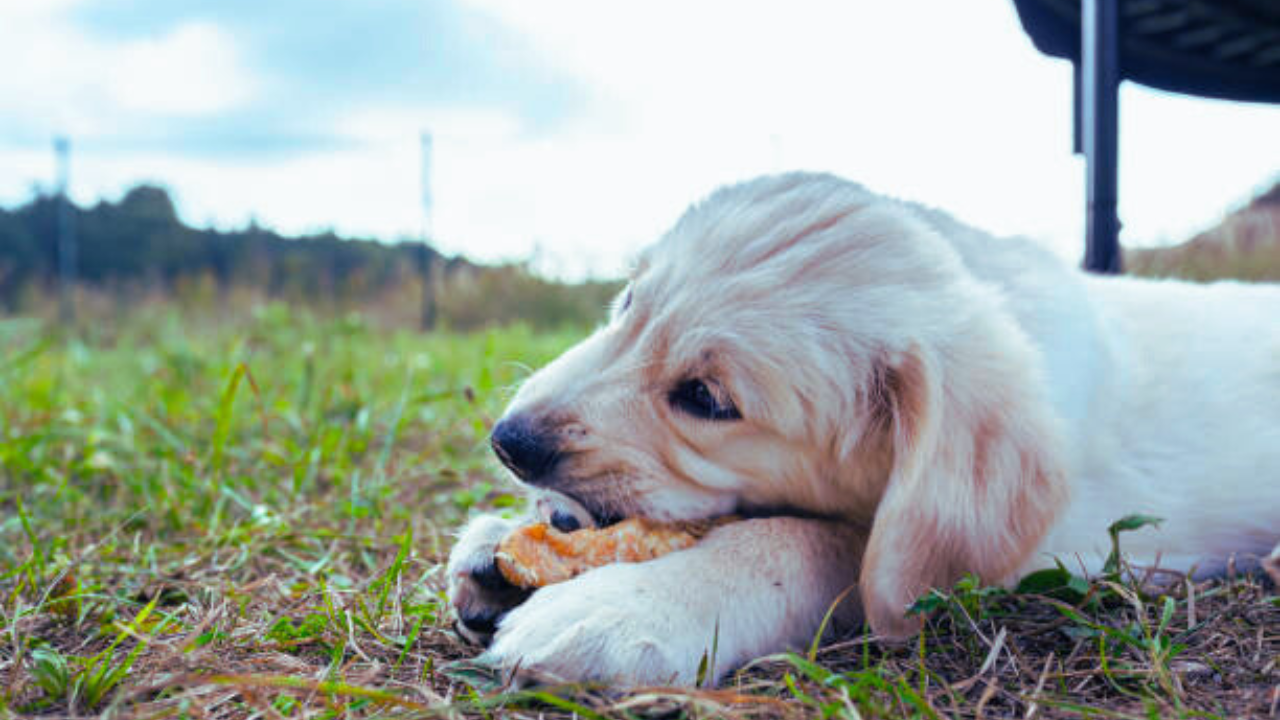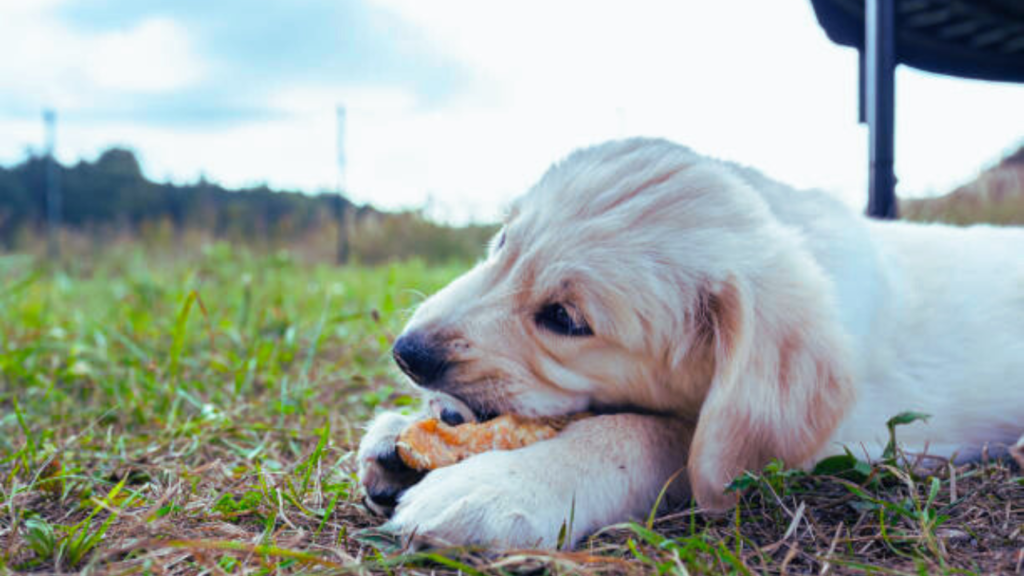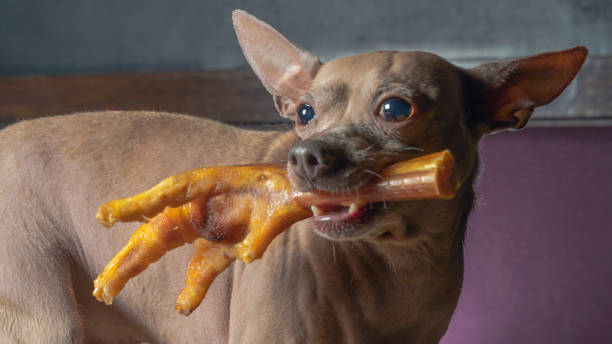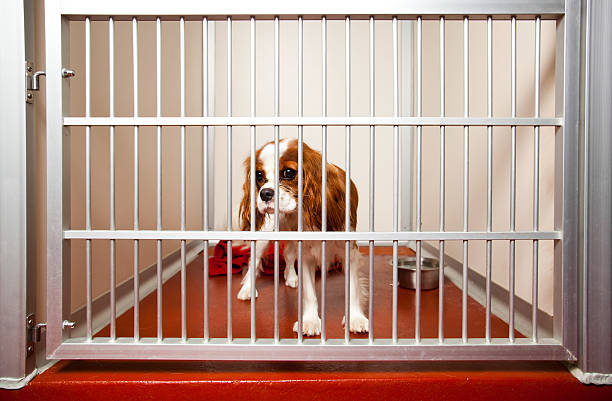“Dog Ate Chicken Bones? An In-Depth Guide to Ensuring the Safety of Your Beloved Pet

“Dog Ate Chicken Bones? An In-Depth Guide to Ensuring the Safety of Your Beloved Pet
Blog Post Slug:
dog-ate-chicken-bones-safety-guide
Meta Description:
If your dog ate chicken bones, learn how to handle this choking hazard. From bone splinters to gastrointestinal blockages, we guide you through emergencies and pet safety tips.
Introduction: The Common Dog Dilemma
Dogs are naturally curious, and their love for tasty treats often lands them in sticky situations. One such common scenario involves chicken bones. Although your furry friend may view them as a delicacy, these seemingly harmless leftovers pose significant dangers. Chicken bones can lead to choking hazards, bone splinters, or even gastrointestinal blockages. Knowing how to handle this situation is crucial for every pet owner.
In this guide, we’ll explore the risks, preventive measures, and steps you can take to ensure your dog’s safety if they happen to devour chicken bones.

Part 1: Understanding the Dangers of Chicken Bones for Dogs
Chicken bones may seem like a harmless snack, but they come with hidden dangers.Cooked chicken bones are more brittle than raw ones, making them prone to splintering easily.
These splinters act like tiny daggers, capable of causing severe internal damage.
Sharp bone fragments can pierce your dog’s mouth, throat, or even digestive tract. Even more concerning, they might cause gastrointestinal blockages, which can be life-threatening.
Understanding these risks will help you prioritize your pet’s safety when dealing with table scraps.
Section 2: Signs Your Dog Ate Chicken Bones
Realizing your dog consumed chicken bones can be alarming. The key is to act quickly while observing for symptoms. Common signs include coughing, choking, or gagging, which may indicate a bone is lodged in their throat.
Digestive issues such as vomiting, diarrhea, or constipation may also arise. In severe cases, abdominal swelling and lethargy could signal a gastrointestinal blockage.Should you observe these signs, reaching out to a veterinarian is crucial.
Section 3: Immediate Steps to Take
When your dog eats chicken bones, don’t panic. Instead, follow these steps to reduce potential harm. First, check your dog’s mouth and throat for any visible bone pieces. Removing them carefully, if possible, can prevent choking hazards.
Next, monitor your pet for any unusual behavior. If they appear to be in pain or struggle to breathe, contact an emergency vet immediately. Acting promptly can make all the difference in preventing further complications.
Section 4: Understanding Gastrointestinal Blockages
A gastrointestinal blockage occurs when a foreign object, like a chicken bone, obstructs the digestive tract. This condition is particularly dangerous because it can cut off blood flow to vital tissues, leading to necrosis.
Dogs with a blockage may show signs such as vomiting, loss of appetite, or bloating. Emergency vet intervention is often required to diagnose and treat this condition. Surgery may be necessary in severe cases, but early detection can sometimes allow for less invasive solutions.
Section 5: The Role of Emergency Vets
When it comes to chicken bones, emergency vets are your best allies. They are trained to assess and manage issues like bone obstruction or internal injuries. After performing diagnostic tests such as X-rays, a vet will determine the best course of action.
Treatment may involve inducing vomiting, endoscopy to remove the bone, or surgery in extreme cases. While no one wants to face a veterinary emergency, having a plan in place ensures your dog receives the care they need quickly.
Section 6: Are Chicken Bones Toxic? Debunking Myths
While chicken bones themselves aren’t toxic, they can cause significant harm due to their physical structure. Their brittleness makes them prone to splintering, leading to sharp fragments that can tear internal tissues.
However, certain cooking methods or added seasonings can introduce toxicity risks. For instance, garlic, onions, or certain spices are harmful to dogs and can exacerbate the situation. Always keep your dog away from bones that have been seasoned or cooked with these toxic ingredients.
Section 7: Preventive Measures for Pet Safety
Prevention is always better than cure, especially when it comes to chicken bones. Start by keeping table scraps out of your dog’s reach. Proper disposal of chicken bones in secure trash bins can help avoid accidental ingestion.
Additionally, educate family members and guests about the risks of feeding chicken bones to dogs. Offering safe alternatives like chew toys or vet-approved raw bones can satisfy your dog’s chewing instincts without compromising their health.

Section 8: Long-Term Digestive Health
Even if your dog avoids immediate complications, ingesting chicken bones can impact their digestive health over time. Fragments of bone can irritate the stomach lining, potentially causing persistent vomiting or diarrhea.
To support your dog’s digestive system, consider feeding them a balanced diet and incorporating probiotics.Routine visits to your veterinarian can help detect and address any underlying issues early, keeping your pet both healthy and content.
Section 9: Knowing When to Act
As a responsible pet owner, knowing when to act is crucial. If your dog shows no signs of distress after consuming chicken bones, monitoring them closely for 48 hours may suffice. However, if symptoms like choking, lethargy, or severe digestive issues arise, don’t delay in seeking professional help.
Always keep in mind that your dog’s well-being depends on your care and vigilance.
Staying informed and proactive can prevent a minor scare from escalating into a serious health crisis.
Conclusion: Prioritize Pet Safety
When it comes to your dog’s health, vigilance is key. While chicken bones may seem innocuous, their potential to cause harm cannot be overstated. By understanding the risks, taking immediate action, and consulting an emergency vet when needed, you can safeguard your furry friend from danger.
Through proactive measures and informed decision-making, you can ensure your dog leads a safe and happy life—free from the perils of chicken bones. Keep your trash secure, educate others, and always prioritize pet safety.
FAQs About “Dog Ate Chicken Bones”
What steps should I take if my dog consumes chicken bones?
If your dog eats chicken bones, remain calm and follow these steps:
Check their mouth and throat for any visible bone pieces and try to remove them carefully if safe.
Monitor your dog closely for symptoms like choking, gagging, vomiting, or difficulty breathing.
Reach out to an emergency veterinarian if your dog displays symptoms of discomfort or gastrointestinal problems.
2. Why are chicken bones dangerous for dogs?
Chicken bones, especially cooked ones, are brittle and prone to splintering. These sharp bone fragments can cause choking, puncture the mouth or throat, or lead to gastrointestinal blockages. Such injuries can result in severe pain, digestive issues, or life-threatening complications requiring emergency intervention.
3. Can a dog digest chicken bones without problems?
While some dogs may pass chicken bones without issues, the risks outweigh the potential outcomes. Bone splinters can damage the digestive tract or lead to blockages, even if symptoms don’t appear immediately. It’s always safer to consult a vet to rule out hidden dangers.
4. Are raw chicken bones safer than cooked ones?
Raw chicken bones are generally less brittle than cooked ones and less likely to splinter. Even so, raw bones can still present dangers such as choking or intestinal blockages.
It’s best to provide vet-approved raw bones or chew toys specifically designed for dogs if you want to offer them a safe chewing option.
5. What symptoms indicate a gastrointestinal blockage in dogs?
Signs of a gastrointestinal blockage include:
Vomiting or retching
Loss of appetite
Bloating or abdominal swelling
Constipation or inability to pass stool
Lethargy or signs of pain
If you notice these symptoms, contact your vet immediately for an evaluation and potential treatment.



